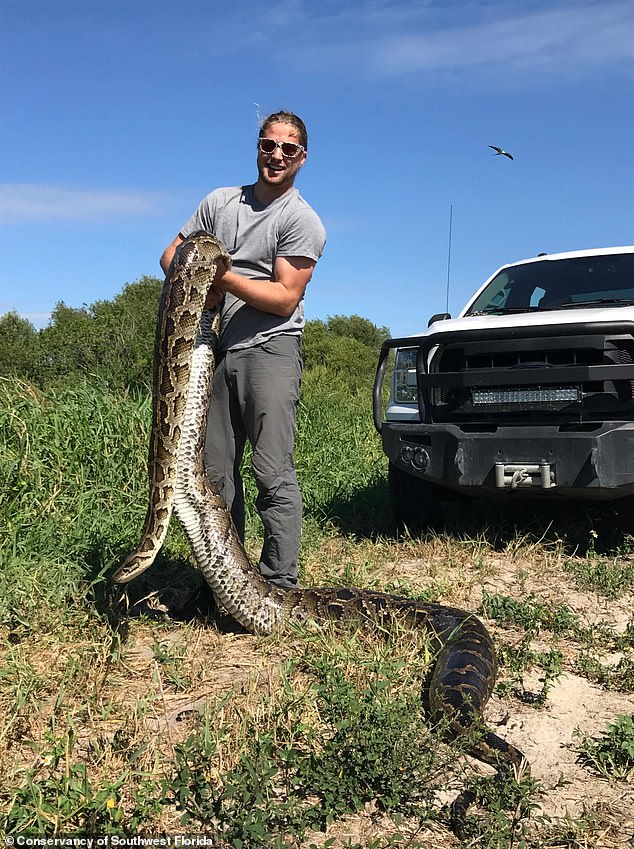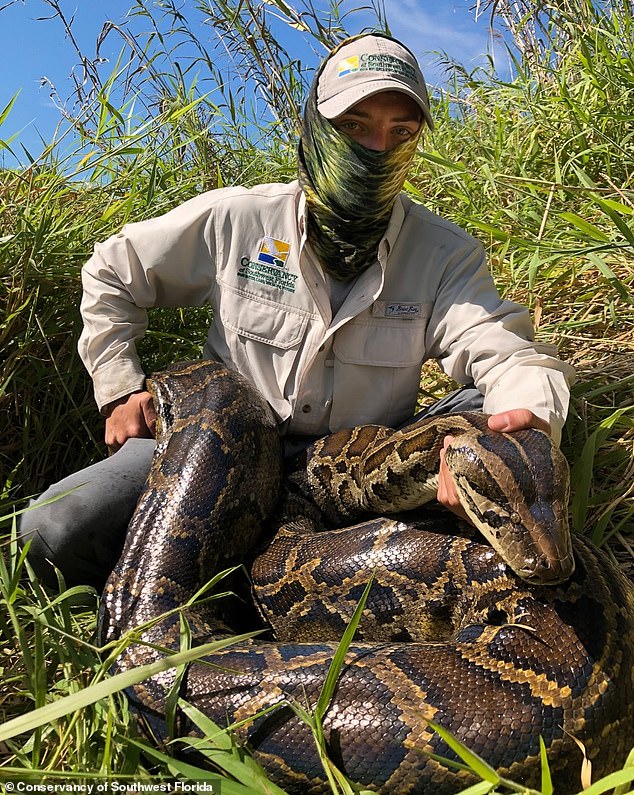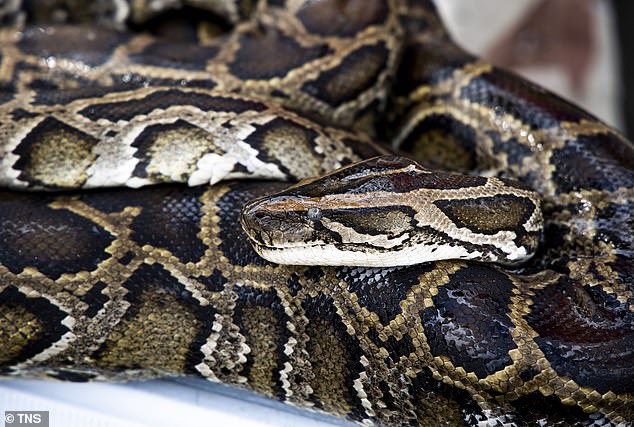Mindblowing moment python wraps its jaw around adult deer as wildlife lovers watch on
Wildlife biologists believe a massive shift is taking place in Florida’s ecosystem after witnessing a Burmese python swallow a whole deer.
Ian Bartoszek and Ian Easterling, biologists with the Conservancy of Southwest Florida, spotted the 115-lb. female predator that engulfed a large 30kg white-tailed deer in Naples last year.
‘It felt like we were literally catching the serial killer red-handed and it was intense to watch [in] real time,” Bartoszek recalled Living Science.
“We looked into it and you can see some of the pictures that came out of it. “So we all kind of relaxed on the floor and recorded some nice video footage,” he added.
After humanely euthanizing the invasive animal to conduct research, the experts concluded that Burmese pythons can consume even larger prey than previously thought.
Ian Bartoszek and Ian Easterling, biologists with the Conservancy of Southwest Florida, spotted the 115-lb. female predator that engulfed a large 30kg white-tailed deer in Naples last year
According to their new release study Titled ‘Big pythons, Big Gape, and Big Prey’, the apex predator can eat anything as long as it fits in its mouth.
‘Burmese pythons (Python bivittatus) are apex predators that are larger than all but a few snake species, and their prey, swallowed whole, cannot be larger than their maximum opening.
‘Our study quantified the maximum opening of three large Burmese Pythons, including the longest specimen captured in Florida and one specimen captured eating a deer.
‘All three specimens had a maximum gape diameter of 26 cm which exceeded the previously reported maximum value of 22 cm’.
![Mindblowing moment python wraps its jaw around adult deer as wildlife lovers watch on 2 'It felt like we were literally catching the serial killer red-handed and it was intense to watch [in] real time,” Bartoszek said](https://nybreaking.com/wp-content/uploads/2024/10/1729962719_130_Mindblowing-moment-python-wraps-its-jaw-around-adult-deer-as.jpeg)
‘It felt like we were literally catching the serial killer red-handed and it was intense to watch [in] real time,” Bartoszek said

After humanely euthanizing the invasive animal to conduct research, the experts concluded that Burmese pythons can consume even larger prey than previously thought. In the photo: Ian Easterling with the now dead python

According to their recently released study entitled ‘Big pythons, Big Gape, and Big Prey’, the apex predator can eat anything as long as it fits in its mouth. Pictured: The python after it was euthanized with a member of the Conservancy
The experts explained that the python has a huge cleft because the lower jaw bones in the front are not fused, which allows its mouth to extend wide.
Their elastic skin also accounts for more than half the circumference of the maximum opening in large pythons, allowing them to consume prey six times larger than similarly sized snakes of some other snake species.
This means that these invasive snakes can be found in addition to foxes, bobcats and raccoons swallow deer, alligators and other prey whole in Florida.
“Watching an invasive apex predator swallow a large deer before your eyes is something you will never forget. The impact the Burmese python has on native wildlife cannot be denied.
“This is a natural problem of our time for the Greater Everglades ecosystem,” Bartoszek noted press release.

The experts explained that the python has a huge cleft because its lower jaw bones in the front are not fused, allowing its mouth to extend wide

Although pythons eat common native species and non-native species such as Norway rats, they are also known to consume endangered native species, including Key Largo woodrats.
The Burmese python is one of the largest snakes in the world. Adult Burmese pythons captured in Florida average between 6 feet and 8 feet in length.
Historically, the python population was concentrated in Everglades National Park in Miami-Dade County, Florida, after being brought to the state from South Asian countries such as India, Burma and the Malay Peninsula through the exotic pet trade.
But they are currently considered established from just south of Lake Okeechobee to Key Largo and from western Broward County west to Collier County.
Although pythons eat common native species and non-native species such as Norway rats, they are also known to consume endangered native species, including Key Largo woodrats.
